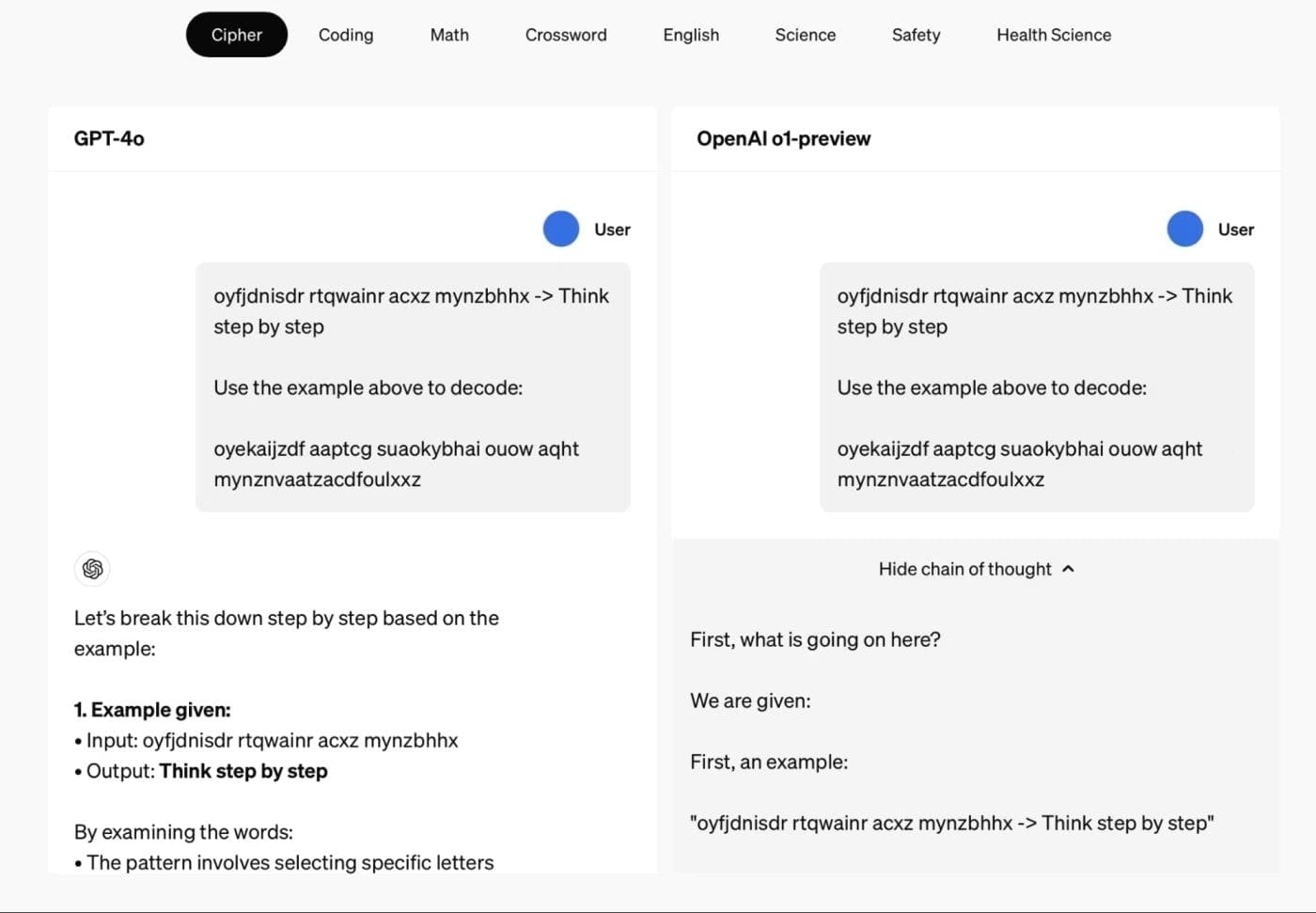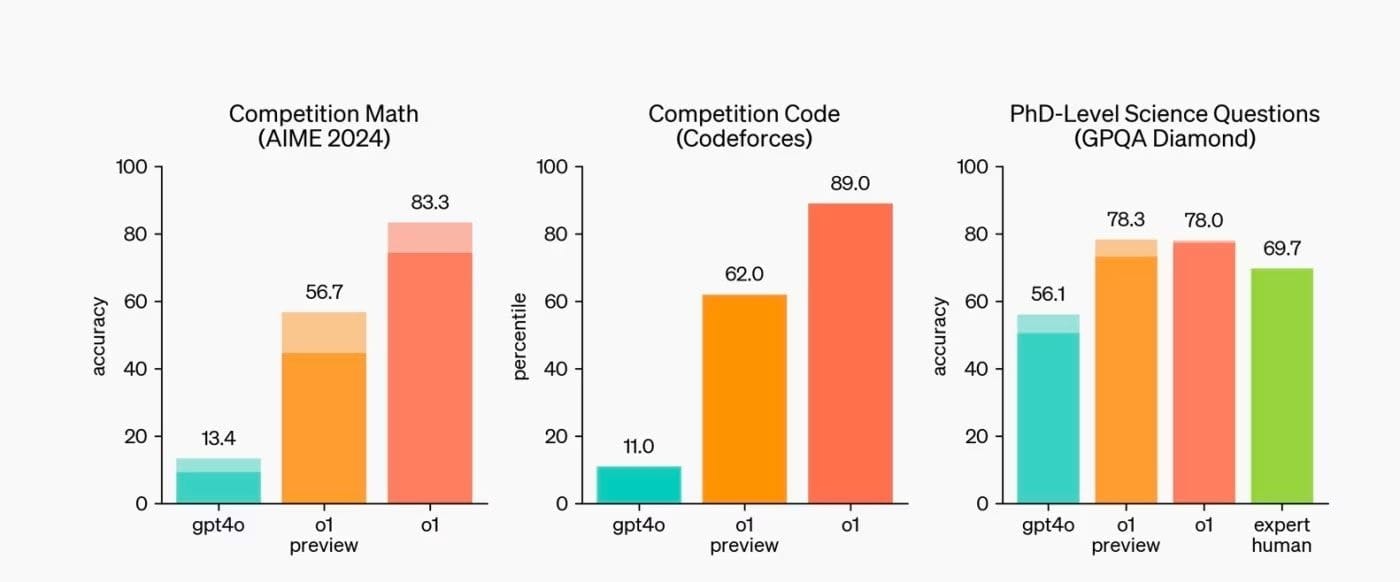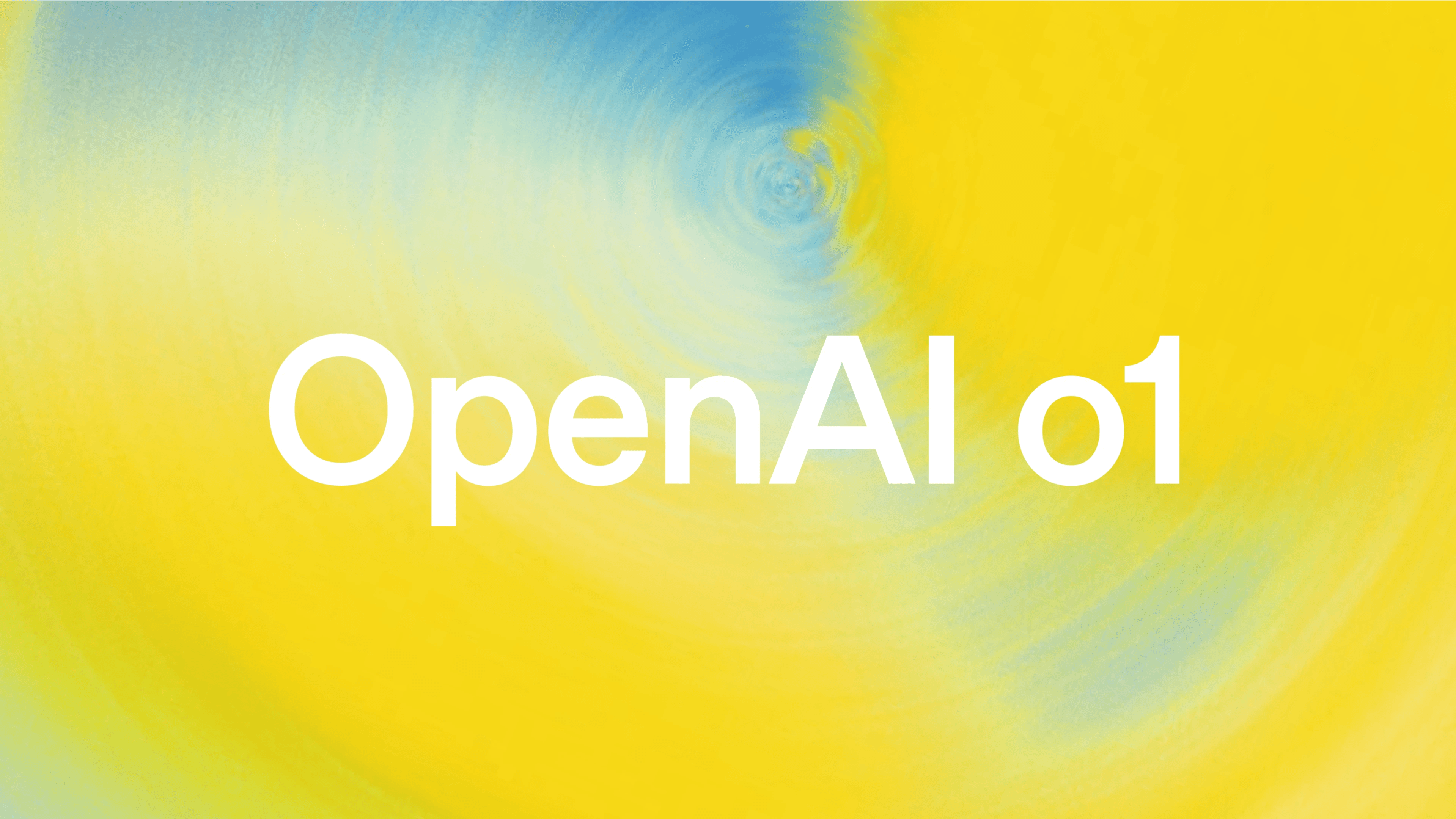How to Prompt OpenAI o1 + Should You Use It? – AI&YOU #72
Stat of the Week: o1 has shown exceptional skill, ranking in the 89th percentile on Codeforces, a renowned platform for coding challenges. (OpenAI)
OpenAI’s new o1 model marks a paradigm shift in how AI processes and responds to complex queries. Unlike its predecessors, o1 is designed to “think” through problems before generating a response, mimicking a more human-like reasoning process. This fundamental change in model architecture necessitates a corresponding evolution in our prompting techniques.
In this week’s edition of AI&YOU, we are exploring insights from three blogs we published on the topic:
- How to Prompt OpenAI o1 + Should You Use It? – AI&YOU #72
- Understanding o1’s Reasoning Capabilities
- Internal Chain of Thought Reasoning
- Performance Leaps in Complex Tasks
- Key Principles for Prompting o1
- Simplicity and Directness in Prompts
- Avoiding Excessive Guidance
- Utilizing Delimiters for Clarity
- How to Optimize Input for o1
- Who Should Use OpenAI’s o1 Model?
- Ideal Candidates for o1 Adoption
- 15 Stats/Facts to Know About OpenAI’s o1 Model
- The Bottom Line
- Thank you for taking the time to read AI & YOU!
How to Prompt OpenAI o1 + Should You Use It? – AI&YOU #72
For AI enterprises and developers accustomed to working with previous models like GPT-4o, adapting to o1’s unique characteristics is crucial. The prompting strategies that yielded optimal results with earlier models may not be as effective—or could even hinder performance—when applied to o1.
Understanding how to effectively prompt this new model is key to unlocking its full potential and leveraging its advanced reasoning capabilities in real-world applications.
Understanding o1’s Reasoning Capabilities
While models like GPT-4o excelled at generating human-like text and performing a wide range of language tasks, they often struggled with complex reasoning, especially in fields requiring logical step-by-step problem-solving. The o1 model, however, has been specifically designed to bridge this gap.
The key difference lies in how o1 processes information. Unlike previous models that generate responses based primarily on pattern recognition within their training data, o1 employs a more structured approach to problem-solving. This allows it to tackle tasks that require multi-step reasoning, logical deduction, and even creative problem-solving with significantly improved accuracy.

Internal Chain of Thought Reasoning
At the heart of o1’s capabilities is its integrated chain of thought (CoT) reasoning. This approach, previously used as an external prompting technique, is now built directly into the model’s architecture. When presented with a complex query, o1 doesn’t immediately generate a response. Instead, it first breaks down the problem into smaller, manageable steps.
This internal reasoning process allows o1 to:
Identify key components of the problem
Establish logical connections between different elements
Consider multiple approaches to solving the task
Evaluate and correct its own reasoning as it progresses
Performance Leaps in Complex Tasks
o1’s integration of CoT reasoning has led to remarkable improvements in complex logical tasks:
Mathematical problem-solving: Achieves accuracy levels orders of magnitude higher than predecessors on olympiad-level problems.
Coding capabilities: Rivals skilled human programmers in software development and debugging.
Scientific reasoning: Excels in data analysis and hypothesis generation, opening new research frontiers.
Multi-step logical deduction: Handles tasks requiring complex step-by-step reasoning with increased proficiency.
By integrating CoT reasoning, o1 has achieved substantial improvements in tasks demanding complex cognition, setting new benchmarks in AI capabilities.

Key Principles for Prompting o1
As we delve into the art of prompting OpenAI’s o1 model, it’s crucial to understand that this new generation of reasoning models requires a shift in our approach. Let’s explore the key principles that will help you harness the full potential of o1’s advanced reasoning capabilities.
Simplicity and Directness in Prompts
When it comes to prompting o1, simplicity is key. Unlike previous models that often benefited from detailed instructions or extensive context, o1’s built-in reasoning capabilities allow it to perform best with straightforward prompts.
Here are some tips for crafting simple and direct prompts:
Be clear and concise: State your question or task directly without unnecessary elaboration.
Avoid overexplaining: Trust the model’s ability to understand context and infer details.
Focus on the core problem: Present the essential elements of your query without extraneous information.
For example, instead of providing step-by-step instructions for solving a complex mathematical problem, you might simply state: “Solve the following equation and explain your reasoning: 3x^2 + 7x – 2 = 0.”
Avoiding Excessive Guidance
While previous models often benefited from detailed instructions or examples (a technique known as “few-shot learning”), o1’s improved performance and internal reasoning process make such guidance less necessary and potentially counterproductive.
Consider the following:
Resist the urge to provide multiple examples or extensive context unless absolutely necessary.
Allow the model to leverage its own reasoning capabilities rather than trying to guide its thought process.
Avoid explicitly stating steps or methods for solving a problem, as this may interfere with o1’s internal chain of thought reasoning.
By refraining from excessive guidance, you allow o1 to fully utilize its advanced reasoning models and potentially discover more efficient or innovative solutions to complex reasoning tasks.
Utilizing Delimiters for Clarity
While simplicity is crucial, there are times when you need to provide structured input or separate different components of your prompt. In these cases, utilizing delimiters can significantly enhance clarity and help o1 process your input more effectively.
Delimiters serve several purposes:
They clearly separate different sections of your prompt.
They help the model distinguish between instructions, context, and the actual query.
They can be used to indicate specific formats or types of information.
Some effective ways to use delimiters include:
Triple quotes: “””Your text here”””
XML-style tags: <instruction>Your instruction here</instruction>
Dashes or asterisks: — or ***
Clearly labeled sections: [CONTEXT], [QUERY], [OUTPUT FORMAT]
For instance, when working with cell sequencing data or other scientific information, you might structure your prompt like this:
—
[CONTEXT]
The following is a dataset from a cell sequencing experiment:
<data>
…your data here…
</data>
[QUERY]
Analyze this data and identify any significant patterns or anomalies.
[OUTPUT FORMAT]
Provide your analysis in a structured report with sections for Methods, Results, and Conclusions.
—
By using delimiters effectively, you can provide necessary context and structure without overwhelming o1’s reasoning capabilities or interfering with its internal chain of thought process.
How to Optimize Input for o1
Effectively leveraging o1’s advanced reasoning capabilities requires optimized input. Balance context and conciseness by providing essential background without overwhelming the model. Focus on quality over quantity, trusting o1’s ability to infer and reason. For complex tasks, offer a brief overview rather than an exhaustive explanation.
When using Retrieval Augmented Generation (RAG) with o1, be selective with external information. Prioritize high-quality, relevant data over volume, using RAG primarily for specific facts rather than general context. This targeted approach enhances o1’s performance on domain-specific tasks without overwhelming its reasoning process.
Embrace o1’s improved performance by trusting it with more challenging, nuanced prompts. Expect sophisticated responses even from concise inputs, and experiment with complex queries that might have been unsuitable for previous AI models. This adaptation allows you to fully harness o1’s potential for complex reasoning tasks.
Who Should Use OpenAI’s o1 Model?
As enterprises and researchers grapple with increasingly complex challenges and the rise of new LLM models, the question arises: should I use OpenAI o1 for my specific needs?

Ideal Candidates for o1 Adoption
As we consider who should use OpenAI’s o1 model, several groups stand out as particularly well-suited to leverage its advanced capabilities. The o1 model’s unique strengths in complex reasoning and problem-solving make it an invaluable tool for those working at the forefront of innovation and discovery.
1️⃣ Research and Development Teams: R&D teams across industries should adopt o1 for its ability to tackle complex challenges using chain of thought reasoning. This model can accelerate research processes, from drug discovery to experimental design, by efficiently analyzing complex interactions and generating hypotheses. O1’s capacity for detailed, step-by-step reasoning aligns well with R&D’s rigorous approach, making it an invaluable tool for exploring new research directions and solving multi-step problems.
2️⃣ Software Development and Coding: o1’s enhanced abilities in tackling coding tasks, optimizing algorithms, and debugging complex systems make it an invaluable asset for developers. For competitive programmers, o1’s systematic approach to coding challenges mirrors top-tier programmers’ thought processes, serving not just as a tool but as a potential mentor to improve problem-solving skills.
3️⃣ Scientific and Academic Institutions: In scientific research and academia, o1’s advanced reasoning capabilities excel at analyzing vast datasets, formulating hypotheses, and suggesting experimental approaches across fields from astrophysics to genomics. Its ability to provide detailed explanations for complex concepts makes it a powerful aid in both research and education. In theoretical physics and advanced mathematics, o1’s proficiency could lead to new insights on long-standing questions, making it an essential tool for pushing the boundaries of human knowledge.
15 Stats/Facts to Know About OpenAI’s o1 Model
1️⃣ 83% accuracy on International Mathematics Olympiad qualifier
This is a significant improvement over GPT-4o’s 13%, showcasing o1’s advanced mathematical reasoning abilities.
2️⃣ 89th percentile ranking on Codeforces
Demonstrates o1’s exceptional skill in competitive programming and solving complex algorithmic problems.
3️⃣ 74% success rate on AIME problems
A huge leap from GPT-4o’s 9%, highlighting o1’s prowess in tackling difficult, multi-step mathematical challenges.
4️⃣ PhD-level accuracy on GPQA benchmark for physics, biology, and chemistry
Shows o1’s versatility across scientific disciplines, making it valuable for high-level scientific research.
5️⃣ 128,000 token context window
Allows o1 to process and understand much longer pieces of text or more complex problems in a single prompt.
6️⃣ Two variants: o1-preview and o1-mini
Offers flexibility for different use cases, balancing capability and speed.
7️⃣ Uses internal “reasoning tokens” for problem-solving
Enables o1 to break down complex problems into steps, mimicking human-like reasoning.
8️⃣ Improved performance in challenging languages like Yoruba and Swahili
Enhances o1’s utility for multilingual tasks and global applications.
9️⃣ 0.44 score on SimpleQA test for hallucinations
Lower than GPT-4o’s 0.61, indicating reduced likelihood of generating false information.
🔟 94% correct answer selection on unambiguous questions
Improvement over GPT-4o’s 72%, suggesting enhanced fairness and reduced bias in responses.
1️⃣1️⃣ Enhanced jailbreak resistance and content policy adherence
Improves safety and reliability for public-facing or sensitive applications.
1️⃣2️⃣ Slower response times compared to previous models
Trade-off for its more extensive reasoning processes and deeper analysis capabilities.
1️⃣3️⃣ o1-preview pricing: $15 per million input tokens, $60 per million output tokens
Reflects the advanced capabilities and increased computational resources required.
1️⃣4️⃣ Excels in mathematics, coding, and scientific reasoning
Shows particular excellence in STEM fields, making it invaluable for research institutions, tech companies, and educational organizations.
1️⃣5️⃣ o1-mini priced at $3 per million input tokens
Offers a more cost-effective option compared to o1-preview, though likely with some trade-offs in capability.
The Bottom Line
OpenAI’s o1 model represents a significant leap forward in AI capabilities, particularly in complex reasoning tasks across STEM fields. Its improved performance in areas like mathematics, coding, and scientific analysis, coupled with enhanced safety features and reduced biases, makes it a powerful tool for enterprises tackling sophisticated challenges.
However, the trade-offs in terms of processing speed and higher costs necessitate careful consideration. As AI continues to evolve, o1 stands as a testament to the rapid advancements in the field, offering unprecedented capabilities that could potentially transform how businesses and researchers approach complex problem-solving in the near future.
Thank you for taking the time to read AI & YOU!
For even more content on enterprise AI, including infographics, stats, how-to guides, articles, and videos, follow Skim AI on LinkedIn
We enable Venture Capital and Private Equity backed companies in the following industries: Medical Technology, News/Content Aggregation, Film & Photo Production, Educational Technology, Legal Technology, Fintech & Cryptocurrency to automate work and scale with AI.






